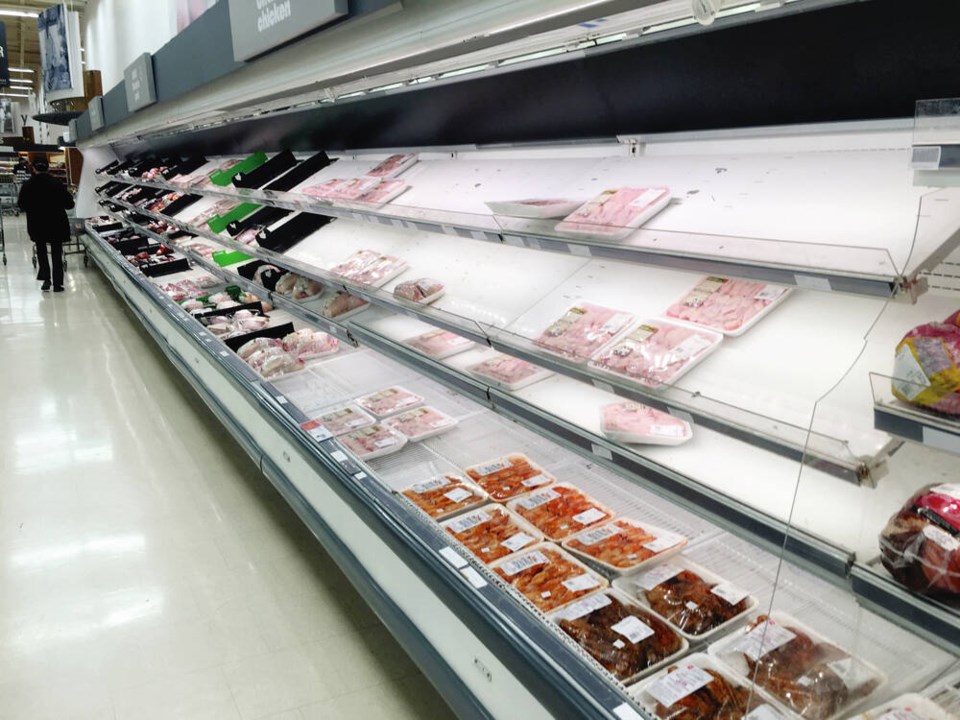Shoplifting appears to be on the rise at grocery stores in Canada as a growing number of supermarkets report an increase in thefts of food and pharmacy products.
Industry experts say meat is the No. 1 stolen item followed by cheese and over-the-counter medicine.
Liquor stores are also reporting an increase in theft since the onset of the pandemic.
It’s unclear whether the uptick in shoplifting is due to escalating inflation and food insecurity, a growing resale market for stolen goods or other factors.
But experts say thefts have become more brazen in recent months and customers wearing face masks make it more difficult to identify people.
Several grocers across the country have expressed concern with surging shoplifting and aggressive behaviour, said Gary Sands with the 91原创 Federation of Independent Grocers.
“Retailers are seeing more thefts and physical confrontations,” said Sands, senior vice-president of public policy for the industry group.
“Just in the last few weeks, grocers have been seeing a lot more meat theft. Meat prices have definitely risen.”
Statistics Canada reported last month that meat prices were up nine per cent in December compared with a year earlier.
It’s hard to pin the trend down to a definitive cause, Sands said.
And getting hard numbers isn’t straightforward. Retailers often ask suspects to leave the store and not return rather than involve police, Sands said.
“They might say, ‘Get out of here and don’t come back,’” he said. “Part of the issue is with masking, even if you’ve got them on camera, it can be hard to recognize people.”
The situation means there’s little official data on the issue.
Sgt. Steve Addison with the 91原创 Police Department said shoplifting is a vastly under-reported crime.
“In 91原创 we have seen a significant trend over the past couple years involving violent shoplifters,” he said in an email. “This includes people using weapons and physical force against store staff and security.”
Addison added that the situation has less to do with the pandemic and more to do with people stealing products to sell in the illicit market.
Retail Council of Canada spokesperson Michelle Wasylyshen said theft impacts retailers in multiple ways with the biggest being the loss of inventory.
One of the few ways retailers can recover a portion of that loss is through increased prices, she said.
Retailers also hire security guards and turn to solutions such as locked showcases and other security measures to deter people from stealing.
But those measures come with added costs retailers recoup must usually through higher prices, Wasylyshen said.
Meanwhile, retailers say prosecution of shoplifting cases has dropped off considerably over the last two years, she said.
“As such, some retailers have changed their approach to focus on trying to deter theft from occurring, rather than making arrests,” Wasylyshen said in an email.
“When theft does occur, staff are advised not to engage with the perpetrator for their safety and that of others who may be nearby.”
Canada’s Food Price Report released in December predicted soaring food prices and rising food insecurity could lead to increased rates of theft.
“A growing phenomenon related to increasing food insecurity caused by high inflation is theft from grocery stores, which is anticipated to intensify in 2022,” the report said.
“Grocers are anecdotally reporting an uptick in theft, particularly of items such as meat, cheese, over-the-counter medication and energy drinks. Unreported loss to theft could be as high as $3,000 to $4,000 each week in some 91原创 grocery stores.”
When asked about grocery store theft, Metro Inc. spokeswoman Marie-Claude Bacon said the company doesn’t comment on the topic.
Sobeys Inc. also declined to comment while Loblaw Companies Ltd. did not respond to a request for comment.
Several police departments contacted across Canada said shoplifting statistics were not readily available.
Const. Rob Carver with the Winnipeg Police Service said shoplifting statistics for the city over the last few years are complicated to draw conclusions from because of a rash of thefts from Manitoba Liquor Marts.
“This is further complicated because some Liquor Marts are located within or attached to grocery stores,” he said in an email. “This makes comparative data inaccurate.”
The Liquor Control Board of Ontario said in a statement it has seen an increase in theft and attempted theft of liquor since the start of the pandemic.
The LCBO said it has increased the presence of security guards in many locations, while employees receive regular training on theft detection, deterrence and reporting.
This report by The 91原创 Press was first published Feb. 8, 2022.



